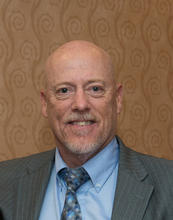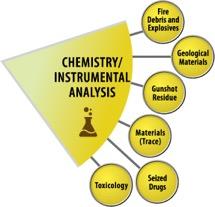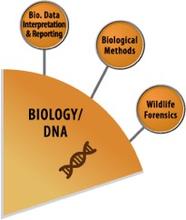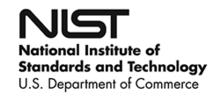August 2018
In this issue
- Draft Standard for Friction Ridge Examination Conclusions Now Available
- Message from the FSSB Chair
- Message from the Director for OSAC Affairs
- Chemistry/Instrumental Analysis SAC Updates
- Crime Scene/Death Investigation SAC Updates
- Biology/DNA SAC Updates
- Digital/Multimedia SAC Updates
- Spotlight on Professional Organizations
- Handwriting and Footwear Black Box Studies - Volunteers Needed!
- OSAC In the News
- On the Horizon
- NIST Activities
Draft Standard for Friction Ridge Examination Conclusions Now Available

The OSAC Friction Ridge Subcommittee recently released their draft standard for friction ridge examination conclusions to the AAFS Academy Standards Board (ASB) to continue through the standards development process. This document provides substantial improvements to the SWGFAST recommendations and positions the friction ridge community to be on stronger foundations as it relates to the expression of source conclusions. Key highlights include:
- Expansion from three categorical conclusions to a five conclusion scale.
- Source Exclusion
- Support for different sources
- Inconclusive/Lacking Support
- Support for same source
- Source Identification
- Revision to the definition of source identification – expressed as a “strength of evidence” statement as opposed to implying an individual is the source to the exclusion of all others. The revised definition is:
- Source identification is the strongest degree of association between two friction ridge impressions. It is the conclusion that the observations provide extremely strong support for the proposition that the impressions originated from the same source and extremely weak support for the proposition that the impressions originated from different sources.
- Source identification is reached when the friction ridge impressions have corresponding ridge detail and the examiner would not expect to see the same arrangement of details repeated in an impression that came from a different source.
- Explicit guidance regarding qualifications and limitations to the expression of source conclusions:
- An examiner shall not assert that a source identification is the conclusion that two impressions were made by the same source or imply an individualization to the exclusion of all other sources.
- An examiner shall not suggest that the offered conclusion is an expression of absolute certainty.
- An examiner shall not assert or imply that latent print examination is infallible or has a zero error rate.
- An examiner shall not cite the number of latent print comparisons performed in his or her career as a measure for the accuracy of a conclusion offered in the case at hand.
- An examiner shall not use the expression ‘reasonable degree of scientific certainty’ or similar assertions as a description of the confidence held in his or her conclusion.
The complete draft standard is available on the OSAC Friction Ridge Subcommittee webpage.
Message from the FSSB Chair
by Steve Johnson, FSSB Chair

Greetings from Texas! As I write this update from the Chair of the FSSB, I’m nearing the end of my week attending the International Association for Identification (IAI), 103rd annual Educational Conference in San Antonio. In addition to my role as Chair of the FSSB, I am the Board’s Association Representative from the IAI. As a Past President of the IAI, I continue to support the association in any way I can. Since our last quarterly newsletter, there has been a lot of activity across OSAC. We have been socializing our Implementation Plan, starting with the most recent ASCLD conference in Atlanta and the American Bar Association (ABA) meetings at Fordham University this past May. We will continue to seek input from our stakeholders as we fine tune the Implementation Plan. Several standards from the Chemistry/Instrumental Analysis SAC were reviewed and approved at our most recent, in-person meeting of the FSSB in Indianapolis this past June. The Board’s protocol for reviewing standards has been modified to make reviewing and approving eligible standards the centerpiece of our quarterly in-person meetings. Finally, we’re looking forward to another OSAC Leadership Strategy Session and in-person Board meeting this September to further improve our communications throughout the organization and establish goals for the coming year.
Getting back to San Antonio. It was a very successful conference for the IAI, ranking in the top five for attendance. Several of our OSAC members and leaders were present during the week and, as we have done since inception, we continued our practice of providing the various forensic associations information on OSAC’s mission and progress. On Sunday, July 29, QIC Chair Karen Reczek along with Richard Cavanagh from NIST, met with the IAI Board of Directors to provide them with a high-level briefing on the progress of OSAC 2.0. On Monday, July 30 following the opening ceremonies, Mark Stolorow, Melissa Gische (Physics/Pattern Interpretation SAC Chair), and I presented on the status of OSAC as it applies to OSAC Affairs, Physics and Pattern Evidence and the business of the FSSB, respectively. On Wednesday, Michael Kessler, the Crime Scene Investigation Subcommittee Vice Chair, provided an update on the Crime Scene Investigation Subcommittee’s activities over the past year. Also, on Wednesday, Facial Identification Subcommittee Chair Lora Sims presented on that Subcommittee’s recently approved morphological feature document by the ASTM. For the week, there were dozens of OSAC members involved in providing workshops, presenting lectures, or just enjoying a fantastic educational program that is emblematic of the IAI’s annual conference.
We’re fast approaching the end of our fourth year of existence and that will mean all active members of the organization will have completed their first full term. The FSSB is reviewing several candidates to fill leadership positions and the various SACs are further looking to replace members that are not renewing for the upcoming year. We generally experience a 5 to 10% turnover in membership each year and this year is no exception. I encourage those who attended our sessions to consider joining the OSAC and, if nothing else, track the progress of our organization via the OSAC Newsletter. I’m looking forward to seeing many of you at our future meetings. Continue your fantastic work in and dedication to OSAC. You all are exceptional as members of the organization.
Message from the Director for OSAC Affairs

OSAC Registry Adds Three New Trace Standards and Updates a Drug Standard
The Organization of Scientific Area Committees for Forensic Science (OSAC) has approved three new trace standards and one updated drug standard for inclusion on the OSAC Registry. This registry serves as a trusted repository of high-quality, science-based standards and guidelines for forensic science practice.
The recent endorsement of these new standards to the OSAC Registry brings the current total to eleven. These documentary standards have been awarded the status of high quality by promotion onto the Registry after successful navigation through the rigorous process of development and review. Now we must work together to ensure that these standards get implemented into practice by the entire forensic science and criminal justice communities.
I would personally like to thank all the OSAC members and affiliates who contributed their time and hard work to see the elevation of these standards to the OSAC Registry. None of the progress toward strengthening the practice of forensic science through improved quality standards would be possible without the collaboration of hundreds of individuals in OSAC.
The recently approved standards are:

- ASTM E1610-18: Standard Guide for Forensic Paint Analysis and Comparison. This guide is intended for forensic examination of paints and coatings.
Diana Wright, Chair of the Materials (Trace) Subcommittee, explains that “E1610 was originally created through SWGMAT as a consensus document with the goal of providing a consistent approach to forensic paint analysis through evaluation, selection, and application of tests that would maximize characterization and discrimination of paint evidence. The 2018 update includes revisions by OSAC’s Materials/Trace Subcommittee that support the implementation of an analytical scheme that is considered reasonable regardless of the size of the laboratory or the number of paint cases it receives each year.”
- ASTM E2937-18: Standard Guide for Using Infrared Spectroscopy in Forensic Paint Examinations. This guide applies to the forensic Infrared Spectroscopy (IR) analysis of paints and coatings and is intended to supplement information presented in ASTM E1610-18.
According to Diana Wright, Chair of the Materials (Trace) Subcommittee, “E2937-18 was updated to ensure that regardless of the type of IR equipment available to the analyst, appropriate guidance is included in this guide to ensure that quality results for forensic paint analysis can be obtained using IR spectroscopy.”

- ASTM E2927-16e1: Standard Test Method for Determination of Trace Elements in Soda-Lime Glass Samples Using Laser Ablation Inductively Coupled Plasma Mass Spectrometry for Forensic Comparisons. This test method covers a procedure for the quantitative elemental analysis of seventeen elements using Laser Ablation Inductively Coupled Plasma Mass Spectrometry (LA-ICP-MS) for the forensic comparison of glass fragments. The covered elements are lithium, magnesium, aluminum, potassium, calcium, iron, titanium, manganese, rubidium, strontium, zirconium, barium, lanthanum, cerium, neodymium, hafnium, and lead.
“E2927-16e1 is considered as the “Gold Standard” for the quantitative elemental analysis and comparison of seventeen different elements in soda-lime glass for forensic purposes leading to high discrimination among different sources of glasses,” says Chair of the Chemistry/Instrumental Analysis Scientific Area Committee, Jose Almirall, Ph.D. - ASTM E2329-17: Standard Practice for Identification of Seized Drugs. This practice describes the minimum criteria for the qualitative analysis (identification) of seized drugs. The 2014 version of this standard was posted on the OSAC Registry on January 26, 2016, until being replaced by this 2017 version on July 20, 2018. The subcommittee updated several sections in the 2014 version to improve the use of the standard.
 Credit: Qimono/Pixabay
Credit: Qimono/Pixabay
The goal of OSAC and its 550-plus members and more than 300 affiliates is to facilitate the development of science-based standards for 25 forensic science disciplines and to promote their widespread adoption.
OSAC Annual Report
The 2018 OSAC Annual Report will be published next month and posted online. OSAC Affairs office will notify subscribers electronically about the release.
Chemistry/Instrumental Analysis SAC Updates

The FSSB recently approved the following standards for inclusion onto the OSAC Registry:
ASTM E2927-16e1: Standard Test Method for Determination of Trace Elements in Soda-Lime Glass Samples Using Laser Ablation Inductively Coupled Plasma Mass Spectrometry for Forensic Comparisons.
ASTM E2937-18: Standard Guide for Using Infrared Spectroscopy for Forensic Paint Examinations.
ASTM E1610-18: Standard Guide for Forensic Paint Analysis and Comparison.
ASTM E3085: Standard Guide for Fourier Transform Infrared Spectroscopy in Forensic Tape Examinations has also been approved by the FSSB, but is currently in the appeals process.
The following documents are under review before being sent to the SDO (ASTM):
Fire Debris and Explosives Analysis subcommittee
- Standard Guide for a Systematic Approach to the Analysis and Identification of Ignitable Liquids.
- Standard Practice for Quality Assurance of Laboratories Performing Analysis of Ignitable Liquids and Ignitable Liquid Residues.
Materials (Trace) Subcommittee
- E2808 - MSP of Paint - first ballot of the mandatory 5 year revision. Substantial changes have been made.
- WK64632 - Paint training guide - a new document to assist with guidance in conducting or participating in a forensic paint training program.
- WK64633 - Tape training guide - a new document to assist with guidance in conducting or participating in a forensic tape training program.
The following document is being readied for a SC ballot to send to ASTM (by way of a public comment period followed by a SAC vote):
- Forensic Hair Examination - this will be a new document
Geological Materials Subcommittee
- Standard Guide for the Collection of Soils and Other Geological Evidence for Forensic Applications.
Toxicology Subcommittee
Standard for Mass Spectral Data Acceptance in Forensic Toxicology has passed at the subcommittee level. The task group membership included members and affiliates from the Toxicology and Seized Drug subcommittees.
The following documents were presented to the subcommittee for feedback during the in-person meeting in Chicago in March 2018:
-
- Standard Practices for Estimating Measurement Uncertainty of Quantitative Measurements in Forensic Toxicology.
- Standard for the Scope and Analytical Sensitivity of Forensic Toxicological Testing in Drug-Facilitated Crime Investigations.
- Standard for the Scope and Sensitivity of Forensic Toxicological Testing in Impaired Driving Investigations.
- Standard Identification Criteria for Analytes in Forensic Toxicology.
- Best Practices for Alcohol Retrograde Extrapolation.
Two additional research needs documents were approved in March. They can be found on the OSAC Toxicology Subcommittee website.
OSAC subcommittee members participated with the AAFS ASB Toxicology Consensus Body members to adjudicate public comments received as part of the AAFS ASB SDO process. Two OSAC drafted documents are nearing completion of the adjudication phase.
The following document is at the Review Stage with the SAC and Resource Committees (RA-30), prior to asking for a vote by the SAC to proceed with RA (RA-75):
ANSI/ASB 017: Standard for Measurement Traceability in Forensic Toxicology
The following document has been recirculated by the ASB following adjudication of public comments:
ANSI/ASB 037: Opinions and Testimony in Forensic Toxicology (Recirculation closed on August 6, 2018)
Seized Drugs Subcommittee
The Seized Drugs subcommittee also finalized (in collaboration with two separate ASTM working groups) 5-year revisions of two additional documents: E2764-11: Standard Practice for Uncertainty Assessment in the Context of Seized-Drug Analysis and E2882-12: Standard Guide for Analysis of Clandestine Drug Laboratory Evidence. The revised versions of these two documents are with ASTM and are being balloted and available for vote and comments at the SDO level.
Gunshot Residue Subcommittee
ASTM E1588-17: Standard Guide for GSR Analysis by SEM/EDS will be voted on by the Chemistry SAC soon to be forwarded to the FSSB for consideration to be added to the OSAC Registry.
Crime Scene/Death Investigation SAC Updates

The subcommittee continues work on their “Strategic Vision” for the future of fire investigation. The work is titled “Strengthening Fire and Explosion Investigation in the United States: A Path Forward.”
Other subcommittees within the SAC continue to work on best practices and standard development.
Biology/DNA SAC Updates

- “Guidelines for Internal Validation of Human Short Tandem Repeat Profiling on Capillary Electrophoresis Platforms” is ready for a 30-day comment period in the Biology/DNA Subcommittees, the Biology/DNA SAC, and Resource Committees.
- “Standard for Training in Forensic DNA Amplification Methods for Capillary Electrophoresis Sequencing” is ready for a 30-day comment period in the Biology/DNA Subcommittees, the Biology/DNA SAC, and Resource Committees.
- “Standard for Training in Forensic DNA Sequencing using Capillary Electrophoresis” is ready for a 30-day comment period in the Biology/DNA Subcommittees, the Biology/DNA SAC, and Resource Committees.
- “Standard for Training in Forensic Human Mitochondrial DNA Interpretation” is ready for a 30-day comment period in the Biology/DNA Subcommittees, the Biology/DNA SAC, and Resource Committees.
Biological Data Interpretation
- “Formulating Propositions for Likelihood Ratios” was approved by the SAC.
- “Standards for Training in Forensic Autosomal STR Data Interpretation” is out for a 30-day comment period in the Biology/DNA Subcommittees, the Biology/DNA SAC, and Resource Committees.
- “Standards for Training in Reporting and Review” is out for comments in the Biology/DNA Subcommittees, the Biology/DNA SAC, and Resource Committees.
- “Standard for Training on CODIS” is out for a 30-day comment period in the Biology/DNA Subcommittees, the Biology/DNA SAC, and Resource Committees.
Wildlife Forensics
- The Subcommittee welcomes Barry Baker and Rachel Jacobs as new members.
Digital/Multimedia SAC Updates

- ANAB Forensics seeks to align the disciplines which may be accredited to those within the OSAC structure. Therefore, ANAB Forensics intends to offer accreditation in the disciplines of Facial Identification and Speaker Recognition.
- In the absence of an OSAC Forensic Audio discipline, and due to the fact that tasks in this discipline are frequently performed by individuals within the Digital Evidence or Video/Imaging Technology & Analysis disciplines, ANAB Forensics has incorporated forensic audio activities within the scope of both the Digital Evidence and Video/Imaging Technology & Analysis Disciplines.
- The DMSAC continues to work with ANAB to refine the scope of activities within the Digital Evidence Discipline.
Spotlight on Professional Organizations

The International Association for Identification (IAI) is the oldest and one of the largest associations of forensic professionals in the world. IAI members represent international public, private and government agencies that encompass forensic science and law enforcement. The active membership ranges from beginning forensic practitioners to seasoned and experienced practitioners, many of whom are considered forensic experts. Many IAI members are certified in their respective forensic fields and have received their certification from the IAI through a series of written and practical examinations. In an effort to better serve the membership, the IAI Forensic Certification Management Board was established as an independent entity to seek accreditation for its eight certified disciplines as required by the International Organization for Standardization (ISO) 17024 standard.
The purpose of the IAI is to associate persons who are engaged in the profession of forensic identification, investigation, and scientific examination of physical evidence in an organized body, so that the profession may be standardized and effectively and scientifically practiced; to encourage the enlargement and improvement of the forensic sciences; to encourage research in the forensic sciences; to keep its members appraised of the latest techniques and discoveries in the forensic sciences; to employ the collective wisdom of the profession to advance the forensic sciences; and to provide training, education and the publication of information in forensic science disciplines represented by the Association.
There are approximately 75 IAI members who are working to develop standards with OSAC. In early 2014, the IAI was one of six forensic science associations invited to the NIST Gaithersburg campus to discuss the formation and implementation of the OSAC enterprise. Pursuant to the IAI’s goal, development and adoption of standards across the spectrum of forensic disciplines is essential to service we provide our many practitioner members. Many IAI members are serving in a leadership capacity as they apply to the specific disciplines represented by our Association. We continue to provide our members the latest information from and accomplishments of OSAC through our annual conference, the OSAC Newsletter and, when appropriate, blast emails in order to maintain transparency and clarity regarding the OSAC mission.
Handwriting and Footwear Black Box Studies - Volunteers Needed!
The FBI Laboratory, with Ideal Innovations and Noblis, is conducting black box studies evaluating the accuracy and reliability of forensic footwear examiners and document examiners. These studies will also assess what impact, if any, such factors as experience and training have on examiner decisions.
Participation in the studies is open to all examiners who perform footwear or handwriting evidence comparisons in operational casework.
Handwriting black box study:
- Examiners will be asked to perform a total of 100 handwriting comparisons over a period of eight months. Each comparison will include one questioned sample and one or more known samples; all known samples in a given comparison will be from a single person. The first 80 comparisons will be provided as electronic files accessed online. The last 20 comparisons will be shipped to participants, in order to include the physical original for each questioned sample, with high-resolution printed images of the known samples.
Footwear black box study:
- Participants will be asked to perform a total of 100 footwear evidence comparisons over a period of approximately one year. Each comparison involves one questioned impression, and one item of footwear (test impressions and outsole images). The 100 comparisons will be distributed in five packets of 20 comparisons each over the one-year period. Each packet will be shipped to participants, with high-resolution printed images, and the option to download images online.
The research team will begin testing examiners for both studies in late 2018. Participation in these studies will be anonymous.
To encourage participation, four participants in each study who completed all assigned comparisons will be randomly selected and given awards: one $1000 and three $500 awards will be given in each study. These will only be awarded after all results are collected -- rapid completion will not improve the chances of winning.
If interested, please let the research team know by contacting: handwriting [at] noblis.org (handwriting[at]noblis[dot]org) or footwear [at] noblis.org (footwear[at]noblis[dot]org).
Please spread the word!
OSAC In the News
This section of the newsletter contains information on recent OSAC news releases and information published about OSAC via third party sources.
Defense's expert witness in Schech murder trial: fire was accidental (credit: Carroll County Times)
Experts Call For CSI Reform At San Antonio Forensics Event (credit: Texas Public Radio)
Deputy AG: Forensic Science is Not Only Numbers, Automation (credit: Forensic Magazine)
On the Horizon

- OLSS and Fall FSSB Meetings, September 26-28, 2018 – Tampa, FL
- Chemistry/Instrumental Analysis SAC + 6 Subs and Crime Scene/Death Investigation SAC + 7 Subs OSAC Standards Meeting, November 5-8, 2018 – Houston, TX
- Biology/DNA SAC + 3 Subs, Physics/Pattern Interpretation SAC + 5 Subs, Digital/Multimedia SAC + 4 Subs, and Resource Committee OSAC Standards Meeting, December 11-14, 2018 – Phoenix, AZ
- Winter FSSB Meeting 2019, February 6-7, 2019 – Miami, FL
- Summer FSSB Meeting 2019, Dates TBD – Location TBD
- Chemistry/Instrumental Analysis SAC + 6 Subs, Crime Scene/Death Investigation SAC + 7 Subs, and Resource Committee OSAC Standards Meeting, July 9-12, 2019 – Charlotte, NC or Orlando, FL or Ft. Lauderdale, FL (Tentative)
- Biology/DNA SAC + 3 Subs, Physics/Pattern Interpretation SAC + 5 Subs, and Digital/Multimedia SAC + 4 Subs OSAC Standards Meeting, July 23-26, 2019, Charlotte, NC or Orlando, FL or Ft. Lauderdale, FL (Tentative)
NIST Activities



Data-Sharing Website May Speed Response to New Illegal Drugs
Read more…

NIST Builds Statistical Foundation for Next-Generation Forensic DNA Profiling

